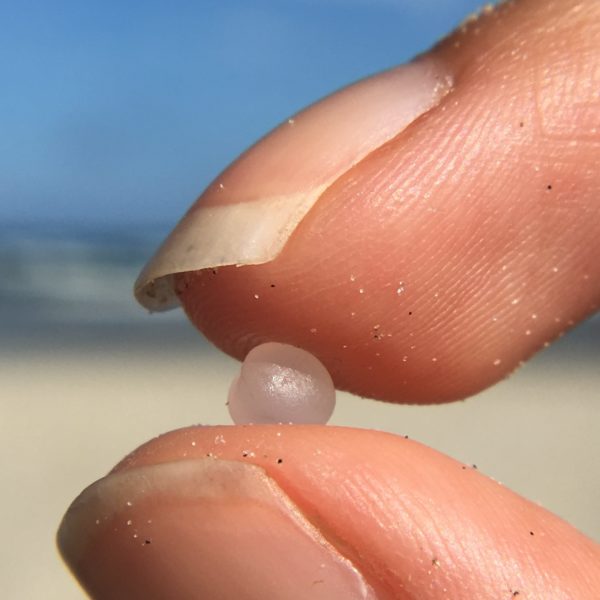PORT ARANSAS, Texas – Plastic pollution has contaminated every continent on Earth. It kills wildlife from whales to sea turtles. Some of the smallest plastic particles, called nurdles, are among the most insidious. It’s difficult to even catalog the scope of the problem. But one group of citizen scientists is going to try. And a recent lawsuit against a plastics manufacturer is about to give them a major boost.
When petrochemical company Formosa Plastics agreed in October to pay $50 million in the largest-ever settlement of a lawsuit linked to the federal Clean Water Act, one of the terms involved $1 million for the Nurdle Patrol, a new worldwide citizen science initiative spearheaded by The University of Texas at Austin’s Marine Science Institute and its Mission-Aransas National Estuarine Research Reserve.
In a case brought by residents of nearby Port Lavaca and environmental groups, the corporation had been found to have illegally polluted waterways with billions of nurdles, the base material from which most plastic items are manufactured.
“Plastics makers ship nurdles all over the world, where they are melted down and molded into everything from toys to packaging, and many have wound up in the ocean and on beaches,” says Jace Tunnell, director of the Mission-Aransas National Estuarine Research Reserve.
Tunnell recently amassed an army of more than a thousand citizen scientists, the Nurdle Patrol, that counts and tracks the plastic pellets on beaches along the Gulf of Mexico and elsewhere. Today U.S. District Judge Kenneth M. Hoyt approved the settlement terms that dictated Formosa Plastics will provide $1 million to support the Nurdle Patrol.
“This is a tool to give regulatory agencies the information they need to do further investigations to see where nurdles are coming from,” Tunnell said.
The Nurdle Patrol started as a Facebook group where Tunnell recruited residents along the Gulf Coast to do short beach surveys and report the number of nurdles they found. What started small with a handful of volunteers rapidly grew to thousands in a matter of months. In September, the website NurdlePatrol.org launched. Anyone anywhere in the world can learn how to do a nurdle survey and report findings. So far, reports have come from as far as Xcalak, Mexico, and Truro, Nova Scotia.
The collected data is provided to state environmental agencies such as the Texas Commission on Environmental Quality on a monthly basis. With the influx of settlement funds spread out over five years, Tunnell hopes to train more citizen scientists, offer workshops and create Nurdle Patrol citizen scientists in areas that don’t have them.
Nurdles are not just an eyesore on beaches. They are microplastics, meaning plastics less than 5 millimeters in size. Often, wildlife such as sea turtles, fish and birds mistake nurdles and other microplastics for food and ingest them. Nurdles are also known to absorb harmful chemicals such as DDT, an insecticide, that has been linked to problems in animals including humans.
Zhanfei Liu, an associate professor at the University of Texas Marine Science Institute, is a research partner to the Nurdle Patrol. He works to combat the microplastic scourge by examining how nurdles absorb chemicals such as PBCs (polychlorinated biphenyls) and PAHs (polyaromatic hydrocarbons), which can be harmful to people. Liu has detected both in nurdles.
“Plastic lasts a very long time in the environment,” Liu said. “Our preliminary data shows higher concentrations of PCBs and PAHs in nurdles. It’s concerning.”
Other University of Texas at Austin researchers are also working on strategies to fight microplastic pollution:
- Assistant professor of practice Moriah Sandy and her team of undergraduate researchers are hunting for bacteria and fungi that eat plastic and are working to understand the microbial chemistry behind plastic degradation.
- Researchers in the lab of Andy Ellington are working to understand and mutate enzymes that break down plastic and increase plastic degradation.



